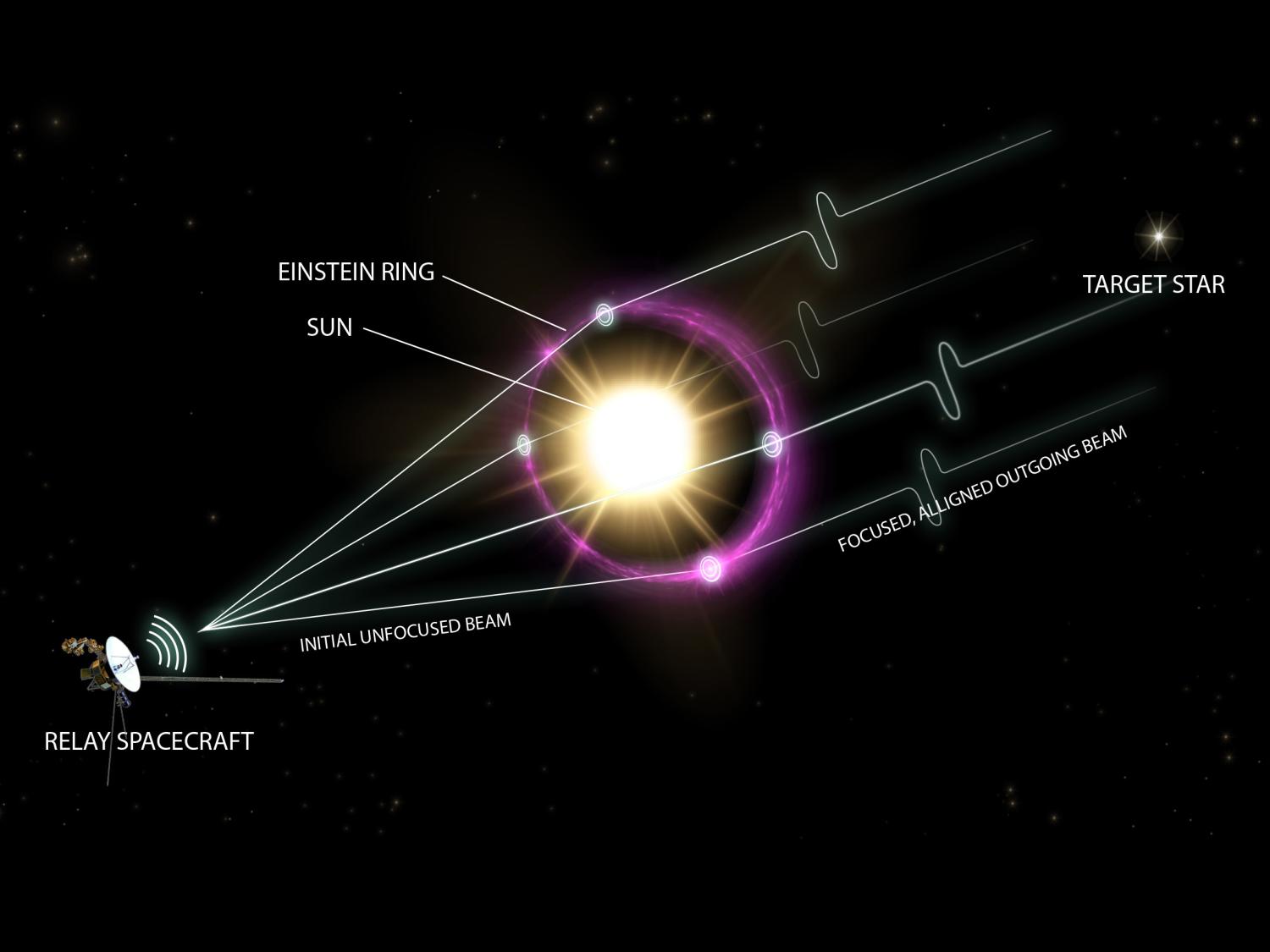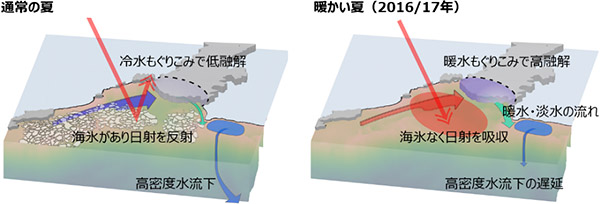2022-07-05 ペンシルベニア州立大学(PennState)
 Communications across interstellar distances could take advantage of a star’s ability to focus and magnify communication signals through an effect called gravitational lensing. A signal from—or passing through—a relay probe would bend due to gravity as it passes by the star. The warped space around the object acts somewhat like a lens of a telescope, focusing and magnifying the light. A new study by researchers at Penn State investigated our solar system for communication signals that might be taking advantage of our own sun. Credit: Dani Zemba / Penn State. Creative Commons
Communications across interstellar distances could take advantage of a star’s ability to focus and magnify communication signals through an effect called gravitational lensing. A signal from—or passing through—a relay probe would bend due to gravity as it passes by the star. The warped space around the object acts somewhat like a lens of a telescope, focusing and magnifying the light. A new study by researchers at Penn State investigated our solar system for communication signals that might be taking advantage of our own sun. Credit: Dani Zemba / Penn State. Creative Commons
この技術は、ペンシルベニア州立大学の大学院で地球外知的生命体探査(SETI)を学ぶコースの一環として研究されたもので、『Astronomical Journal』に掲載が認められ、プレプリントサーバーarXivで公開されています。
<関連情報>
- https://www.psu.edu/news/eberly-college-science/story/could-we-eavesdrop-communications-pass-through-our-solar-system/
- https://arxiv.org/abs/2206.14807
ケンタウルス座α星をターゲットとする太陽重力レンズの電波テクノシグネチャの探索
A Search for Radio Technosignatures at the Solar Gravitational Lens Targeting Alpha Centauri
Nick Tusay, Macy J. Huston, Cayla M. Dedrick, Stephen Kerby, Michael L. Palumbo III, Steve Croft, Jason T. Wright, Paul Robertson, Sofia Sheikh, Laura Duffy, Gregory Foote, Andrew Hyde, Julia Lafond, Ella Mullikin, Winter Parts, Phoebe Sandhaus, Hillary H. Smith, Evan L. Sneed, Daniel Czech, Vishal Gajjar
Astronomical Journal Submitted on 28 Jun 2022
DOI:https://doi.org/10.48550/arXiv.2206.14807
Stars provide an enormous gain for interstellar communications at their gravitational focus, perhaps as part of an interstellar network. If the Sun is part of such a network, there should be probes at the gravitational foci of nearby stars. If there are probes within the solar system connected to such a network, we might detect them by intercepting transmissions from relays at these foci. Here, we demonstrate a search across a wide bandwidth for interstellar communication relays beyond the Sun’s innermost gravitational focus at 550 AU using the Green Bank Telescope (GBT) and Breakthrough Listen (BL) backend. As a first target, we searched for a relay at the focus of the Alpha Centauri AB system while correcting for the parallax due to Earth’s orbit around the Sun. We searched for radio signals directed at the inner solar system from such a source in the L and S bands. Our analysis, utilizing the turboSETI software developed by BL, did not detect any signal indicative of a non-human-made artificial origin. Further analysis excluded false negatives and signals from the nearby target HD 13908. Assuming a conservative gain of 10^3 in L-band and roughly 4 times that in S-band, a ~1 meter directed transmitter would be detectable by our search above 7 W at 550 AU or 23 W at 1000 AU in L-band, and above 2 W at 550 AU or 7 W at 1000 AU in S-band. Finally, we discuss the application of this method to other frequencies and targets.



